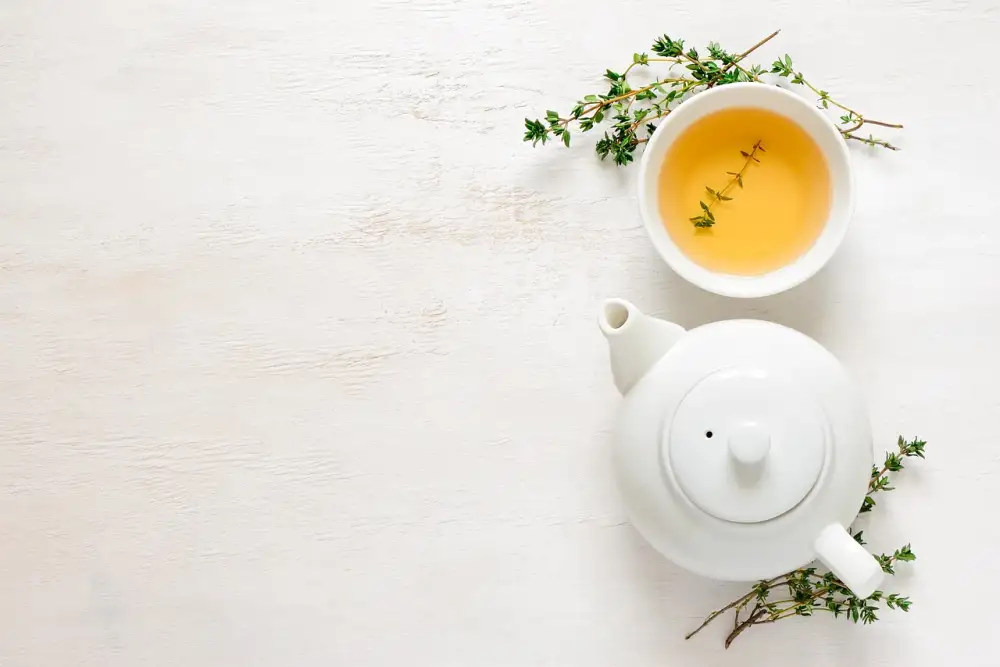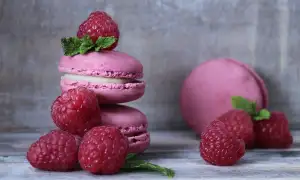Master the Art of Brewing Tea: A Step-by-Step Guide to Making the Perfect Cup

- Selecting the right tea leaves for a flavorful brew
- Preparing the water for the perfect temperature
- Measuring the right amount of tea leaves for a balanced flavor
- Choosing the appropriate brewing vessel for optimal infusion
- Steeping the tea leaves for the ideal amount of time
- Straining the brewed tea to remove any residue
- Enhancing the flavor with optional additions like milk or sweeteners
- Serving and enjoying a delightful cup of freshly brewed tea
- Tips and tricks for experimenting with different tea varieties and flavors
Brewing tea is not just a simple task; it is an art form that requires precision, patience, and a deep appreciation for the flavors and aromas that can be extracted from tea leaves. Whether you are a seasoned tea connoisseur or a beginner looking to explore the world of tea, mastering the art of brewing will elevate your tea-drinking experience to new heights. In this step-by-step guide, we will walk you through the process of making the perfect cup of tea, from selecting the right tea leaves to enhancing its flavor with optional additions. So grab your favorite teapot and get ready to embark on a journey of sensory delight as we delve into the artistry of brewing tea.
Selecting the right tea leaves for a flavorful brew
When it comes to brewing the perfect cup of tea, selecting the right tea leaves is crucial. The flavor and aroma of your brew depend on the quality and type of tea leaves you choose. Whether you prefer black, green, white, or herbal tea, opt for loose-leaf teas over tea bags for a more flavorful experience. Loose-leaf teas are typically made from whole tea leaves, which retain their essential oils and flavors better than broken leaves found in tea bags. Look for teas that are fresh and have a vibrant color, as this indicates high-quality leaves. Experiment with different varieties to find your preferred flavor profile, whether it's bold and robust or delicate and floral. Remember, the key to a flavorful brew lies in selecting the right tea leaves that suit your taste preferences.
Preparing the water for the perfect temperature
Preparing the water for the perfect temperature is crucial in brewing tea. Different types of tea require different water temperatures to bring out their unique flavors. For delicate teas like green and white teas, water should be heated to around 175°F (80°C). Black teas, on the other hand, require hotter water at around 200°F (93°C). Oolong teas fall somewhere in between, with a recommended temperature of 185°F (85°C). Boiling water should be reserved for herbal and tisane infusions. To achieve the right temperature, use a thermometer or simply bring the water to a boil and let it cool for a few minutes before pouring it over your tea leaves. This attention to detail will ensure that you extract the full flavor potential from your chosen tea leaves.
Measuring the right amount of tea leaves for a balanced flavor
When it comes to brewing the perfect cup of tea, measuring the right amount of tea leaves is crucial for achieving a balanced flavor. Too little and the tea may taste weak and bland, while too much can result in a bitter or overpowering brew. The general rule of thumb is to use one teaspoon of loose tea leaves per cup of water. However, this can vary depending on personal preference and the type of tea being brewed. For stronger flavors, you may choose to use slightly more tea leaves, while for milder teas, less may be needed. Experimentation is key to finding your ideal balance and creating a truly delightful cup of tea.
Choosing the appropriate brewing vessel for optimal infusion
When it comes to brewing tea, the choice of brewing vessel plays a crucial role in achieving optimal infusion. Different vessels can affect the flavor and aroma of the tea. For delicate teas like green or white tea, a glass teapot is ideal as it allows you to appreciate the color and clarity of the brew. Porcelain teapots are great for black or oolong teas as they retain heat well. Clay teapots, such as Yixing pots, are perfect for enhancing the flavors of certain teas. Ultimately, selecting the right brewing vessel will enhance your tea-drinking experience and bring out the best qualities of your chosen tea leaves.
Steeping the tea leaves for the ideal amount of time
Steeping the tea leaves for the ideal amount of time is crucial to achieving the perfect cup of tea. Each type of tea requires a specific steeping time to extract its unique flavors and aromas. Green teas, for example, should be steeped for about 2-3 minutes, while black teas require 3-5 minutes. Herbal teas can be steeped for longer, around 5-7 minutes. Oversteeping can result in a bitter taste, while understeeping may leave the tea weak and lacking in flavor. It's important to set a timer and remove the tea leaves promptly once the desired steeping time has been reached.
Straining the brewed tea to remove any residue
Straining the brewed tea is an essential step to ensure a smooth and residue-free cup. After steeping the tea leaves for the ideal amount of time, it's time to strain out any remaining particles. Using a fine-mesh strainer or a tea infuser, carefully pour the brewed tea into your teacup, ensuring that no loose leaves or debris make their way into your cup. This process not only removes any unwanted residue but also helps in achieving a visually appealing and clear brew. Remember, a well-strained cup of tea enhances both the taste and presentation, allowing you to fully enjoy its flavors and aromas.
Enhancing the flavor with optional additions like milk or sweeteners
Enhancing the flavor of tea with optional additions like milk or sweeteners can take your cup to a whole new level. Adding a splash of milk can create a creamy and smooth texture, while also mellowing out any bitterness in the tea. For black teas, such as Assam or Earl Grey, adding a touch of honey or sugar can enhance their natural sweetness. If you prefer a more indulgent treat, try adding a dollop of whipped cream or a sprinkle of cinnamon on top. Remember, the key is to add these enhancements sparingly, allowing the tea's unique flavors to shine through while still enjoying that extra touch of decadence.
Serving and enjoying a delightful cup of freshly brewed tea
Serving and enjoying a delightful cup of freshly brewed tea is the final step in mastering the art of tea brewing. Once your tea has steeped to perfection, it's time to savor the flavors and indulge in a moment of tranquility. Carefully pour the brewed tea into your favorite teacup, taking note of its vibrant color and enticing aroma. Hold the cup close to your nose, inhaling deeply to fully appreciate the fragrant bouquet. Take small sips, allowing the tea to glide across your palate, awakening your taste buds with its nuanced flavors. Observe how each sip leaves a lingering aftertaste, revealing subtle notes and complexities. As you sip on your cup of tea, take a moment to relax and immerse yourself in its soothing warmth. Let the gentle infusion calm your mind and rejuvenate your spirit. Whether enjoyed alone or shared with loved ones, a well-brewed cup of tea is an invitation to indulge in a moment of pure bliss. So sit back, unwind, and relish in this simple yet exquisite pleasure that only a perfectly brewed cup of tea can provide.
Tips and tricks for experimenting with different tea varieties and flavors
1. Start by exploring different types of tea, such as black, green, white, oolong, or herbal teas. Each variety offers a unique flavor profile and aroma.
2. Experiment with blending different tea leaves to create your own custom brews. Mix floral teas with fruity ones or add a touch of spice to create a personalized flavor combination.
3. Adjust the steeping time to control the strength of the tea. Longer steeping times result in stronger flavors while shorter times produce milder brews.
4. Try adding natural ingredients like fresh herbs, citrus zest, or even edible flowers to infuse additional flavors into your tea.
5. Don't be afraid to pair your tea with complementary foods. For example, a delicate green tea pairs well with light salads or seafood dishes, while robust black teas go perfectly with rich desserts or hearty meals.
6. Explore different brewing methods such as cold brewing or using a gaiwan (a traditional Chinese brewing vessel) to experience new dimensions of taste and aroma.
7. Consider the water quality when brewing tea – using filtered water can enhance the taste and prevent any unwanted mineral flavors from affecting your brew.
8. Keep track of your experiments by taking notes on the type of tea used, steeping time, water temperature, and any additions made. This will help you refine your preferences over time.
Remember that brewing tea is an art form that allows for endless creativity and exploration. So don't hesitate to try new combinations and techniques to discover your perfect cup of tea!
Published: 19. 11. 2023
Category: Food



